Introduction to Juneau
Juneau, the capital city of Alaska, is a place of breathtaking beauty and rich history. Unlike any other state capital in the United States, it is not accessible by road, making a visit here a truly unique journey. Nestled between the Gastineau Channel and towering, snow-capped mountains, Juneau offers a perfect blend of urban life and untamed wilderness. This guide will provide an overview of this remarkable city, from its geography and history to the compelling reasons it should be on every traveler’s list.
Where is Juneau Located?
Juneau is situated in the heart of Alaska’s Panhandle, a long, narrow strip of islands and coastal mountains in the southeastern part of the state. The city is bordered on one side by the Gastineau Channel, a narrow waterway that provides access from the Inside Passage, and on the other by the stunning Coast Mountains and the Juneau Icefield. This unique geography means the city is completely isolated from the North American road system. Access is exclusively by air or sea, with the Alaska Marine Highway System (ferry) and commercial airlines serving as the lifelines for the community. This isolation is a major part of Juneau’s charm, preserving its pristine environment and giving it a distinct, remote feel.
Table of Contents
A Brief History of Juneau
Juneau’s history is deeply rooted in the gold rush era. In 1880, prospectors Joe Juneau and Richard Harris were led to Gold Creek by a local Tlingit chief named Kowee, where they discovered rich deposits of gold. This discovery sparked a gold rush, and the settlement that grew around the mining operations was first named Harrisburg, then Rockwell, before finally being christened Juneau in 1881. It quickly became a bustling mining town and in 1906, replaced Sitka as the official capital of Alaska. The city’s economy was dominated by mining until the last major gold mine closed in 1944. Today, Juneau’s economy is centered on government, tourism, and fishing, but the legacy of its gold rush past is visible everywhere, from historical buildings to old mining sites.
Why Visit Juneau?
Juneau is a dream destination for adventurers and nature lovers. Its unique location provides endless opportunities for outdoor activities, from glacier trekking to whale watching. Here are a few key reasons to put Juneau on your travel list:
- Spectacular Glaciers: The most famous attraction is the Mendenhall Glacier, a massive, accessible glacier just a short drive from downtown. Visitors can hike, kayak, or simply admire its stunning blue ice.
- Abundant Wildlife: The waters around Juneau are a prime feeding ground for humpback whales and orca, making whale watching tours a popular activity. On land, you might spot bald eagles, brown bears, and black bears.
- Outdoor Adventures: With miles of trails, rugged mountains, and a vast icefield, Juneau is an outdoor enthusiast’s paradise. You can go hiking, kayaking, zip-lining, or even dog sledding on a glacier.
- Rich Culture and History: The city’s history is preserved in its downtown streets, museums, and historical sites. You can explore the Alaska State Museum or the remnants of the gold rush. The area is also the ancestral homeland of the Tlingit, Haida, and Tsimshian peoples, and their vibrant culture is a significant part of Juneau’s identity.
Top Attractions in Juneau
Juneau is an outdoor paradise, offering a wide variety of attractions that showcase its stunning natural beauty and rich cultural heritage. From massive, accessible glaciers to panoramic mountain views, there’s something for every type of traveler.
Mendenhall Glacier
Just a 12-mile drive from downtown Juneau, the Mendenhall Glacier is arguably the city’s most famous and accessible attraction. As part of the immense Juneau Icefield, this 13-mile-long river of ice offers a stunning spectacle of blue crevasses and towering ice formations. The Mendenhall Glacier Visitor Center provides an elevated viewing area, interactive exhibits about glacier formation, and a short film.
Beyond the visitor center, a network of trails allows for a more immersive experience. The paved Nugget Falls Trail leads to the base of a spectacular 377-foot waterfall that cascades into the glacial lake, offering a fantastic photo opportunity. For the more adventurous, guided kayaking or canoe tours on Mendenhall Lake bring you right up to the glacier’s icy face, while helicopter tours can land you directly on the ice for an unforgettable guided trek or even dog sledding.
Mount Roberts Tramway
For a breathtaking, 360-degree view of Juneau and its surrounding landscape, a ride on the Mount Roberts Tramway is a must. Located right in downtown, the tram whisks you from the cruise ship docks to a mountain house complex at 1,800 feet above sea level. The five-minute ride provides a scenic panorama of the Gastineau Channel, the downtown area, and the Chilkat Mountains.
At the summit, you’ll find the Mountain House, which features a restaurant, a gift shop, and an interpretive center. You can watch an educational film about the Tlingit people and their culture, and visit a live bald eagle display. For those who want to stretch their legs, a network of trails offers opportunities for alpine hiking, with options for all skill levels. The views from the top are particularly stunning on a clear day, but the experience is still magical even when the clouds roll in.
Glacier Bay National Park
While not in Juneau itself, Glacier Bay National Park and Preserve is a highlight of any trip to Southeast Alaska and is most often accessed from Juneau. This UNESCO World Heritage Site is a remote and stunning wilderness area featuring tidewater glaciers that calve massive chunks of ice into the sea, creating a spectacular show.
Since there are no roads into the park, visitors typically arrive via a day cruise or a small plane from Juneau. The park is a prime location for spotting marine wildlife, including humpback whales, orca, sea otters, and sea lions. It’s a true wilderness experience, offering a glimpse into the raw, powerful forces of nature that have shaped Alaska.
Alaska State Museum
To understand the unique history and culture of Juneau and the rest of Alaska, a visit to the Alaska State Museum is essential. Located in a modern facility in downtown Juneau, the museum houses extensive collections that tell the story of the state, from its native cultures and Russian colonial past to the gold rush era and modern development.
The museum’s permanent exhibits feature a diverse array of artifacts, including intricate Alaska Native art and historical objects, as well as a large section dedicated to Alaska’s natural history. The museum also hosts rotating exhibits, so there is always something new to see. It’s a perfect indoor activity, offering a rich and educational counterpoint to Juneau’s magnificent outdoor attractions.
Whale Watching Tours
Whale watching is one of the most popular and unforgettable activities in Juneau. The waters of the northern Inside Passage are a prime summer feeding ground for over 600 humpback whales and orca. From April to November, these magnificent creatures migrate to Alaska to feed, making sightings almost guaranteed during the peak season.
Most tours depart from Auke Bay Harbor, a short drive from downtown Juneau. Tours typically last about three hours, with captains and onboard naturalists providing insight into the whales’ behaviors, from “bubble-net feeding” to breaching and tail slapping. Tour operators often have a sighting guarantee; if you don’t see a whale, you may receive a partial or full refund. It’s a truly moving experience to witness these gentle giants in their natural habitat, and a great way to also spot other marine life like sea lions, harbor seals, and Dall’s porpoise.
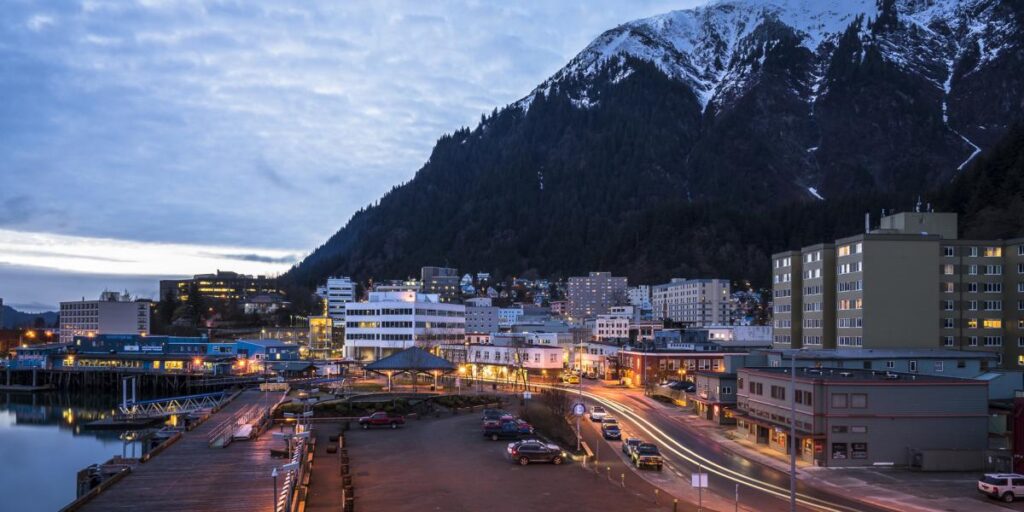
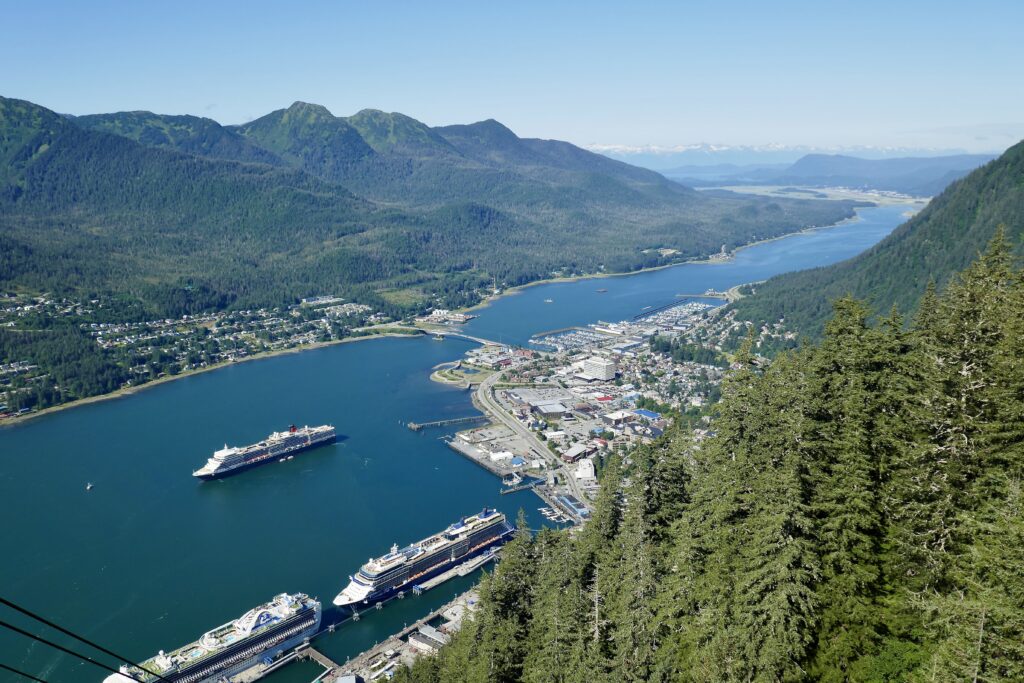
Outdoor Adventures
Juneau’s landscape is a playground for outdoor enthusiasts. The city’s location within the Tongass National Forest, the nation’s largest national forest, means there are endless opportunities for hiking, kayaking, and wildlife viewing.
Hiking Trails and Nature Walks
Juneau is a hiker’s paradise, with a wide range of trails suitable for all skill levels.
- Easy Trails: For a leisurely walk with big rewards, the Nugget Falls Trail at the Mendenhall Glacier is a must-do. The two-mile, flat, gravel path leads to a powerful waterfall and offers spectacular views of the glacier. The Rain Forest Trail on Douglas Island provides an easy, one-mile loop through lush temperate rainforest.
- Moderate Trails: The West Glacier Trail on the opposite side of Mendenhall Lake offers a more challenging hike with a closer, but different, view of the glacier. For a historical journey, the Perseverance Trail near downtown Juneau follows an old mining railroad and offers great views of the valley.
- Strenuous Hikes: Ambitious hikers can tackle trails like Gastineau Peak or Mount Juneau, which offer steep climbs and unparalleled panoramic views of the city, glaciers, and surrounding islands.
Kayaking and Water Activities
Kayaking is an incredible way to experience Juneau’s waterways and get up close to its marine life and glaciers.
- Mendenhall Lake: Many tours offer kayaking on Mendenhall Lake, providing a unique perspective of the glacier’s face and floating icebergs. This is a very popular option for visitors who want an intimate glacier experience.
- Sea Kayaking: Guided sea kayaking tours from Auke Bay take you out into the calm, protected waters of the Inside Passage. This is a quieter alternative to large tour boats and a great way to get a true feel for the environment. You might even find yourself paddling near feeding whales or watching harbor seals sunbathing on rocky outcrops.
Wildlife Viewing Opportunities
Juneau is a haven for wildlife, and you don’t always need a tour to see it.
- Bears: While not guaranteed, bears are frequently seen in the Mendenhall Glacier Recreation Area, especially during the late summer salmon runs when they are drawn to Steep Creek. Always observe bear safety protocols and maintain a safe distance. For a guaranteed bear viewing experience, specialized tours to places like Admiralty Island’s Pack Creek Bear Sanctuary offer a remote and safe way to see brown bears in their natural habitat.
- Bald Eagles: Bald eagles are abundant here. You’ll likely see them perched on trees and light posts, or soaring overhead. Good places to spot them include the Auke Bay Harbor, the Mendenhall Glacier area, and Eagle Beach State Park.
- Other Wildlife: In addition to whales, bears, and eagles, keep an eye out for mountain goats on the steep cliffs near the highway, porcupines and marmots at the top of the Mount Roberts Tramway, and sea lions and seals in the Gastineau Channel. The extensive wetlands and tidal flats also provide excellent opportunities for bird watching.
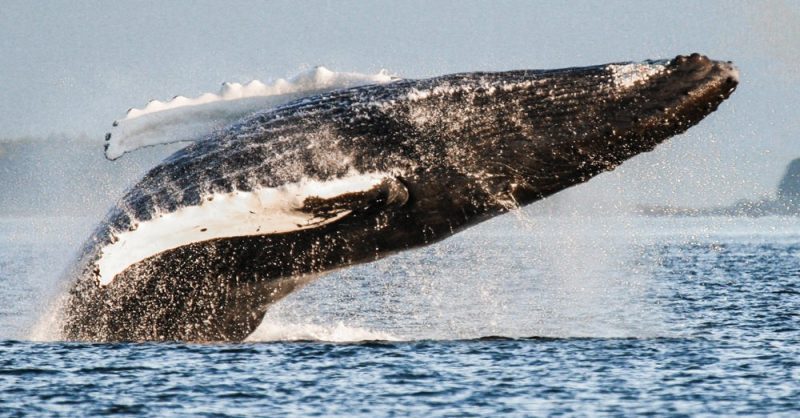

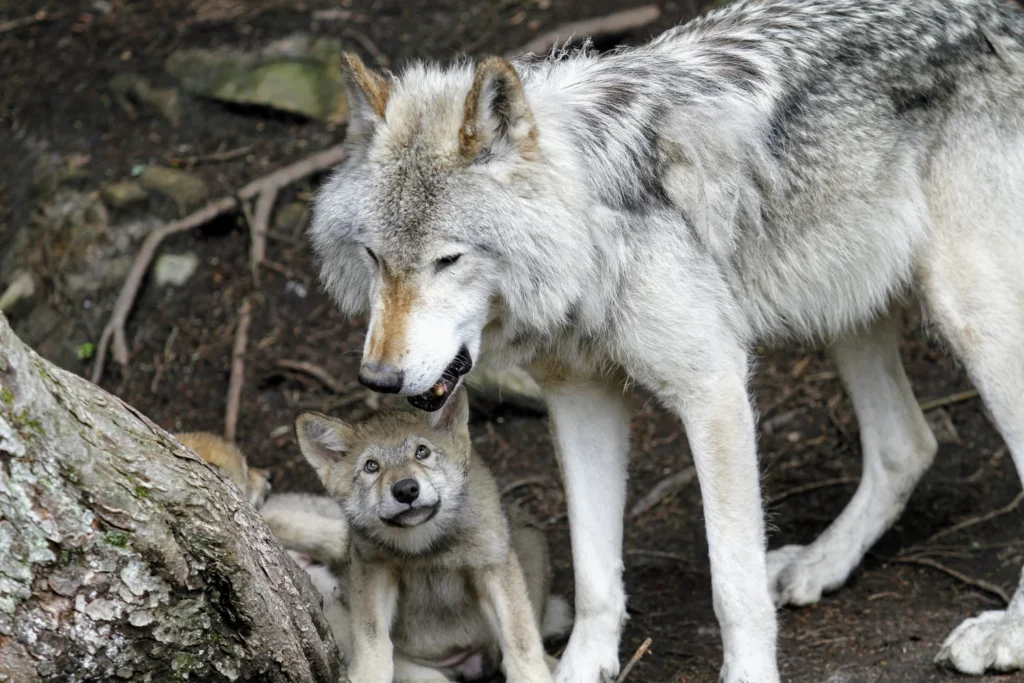
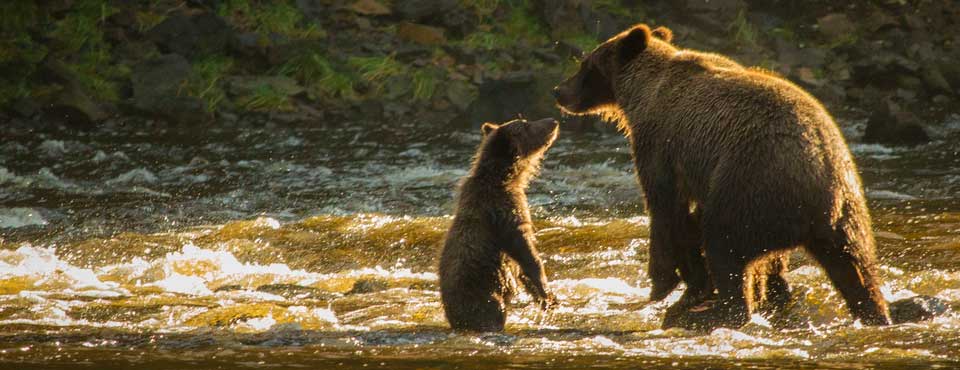
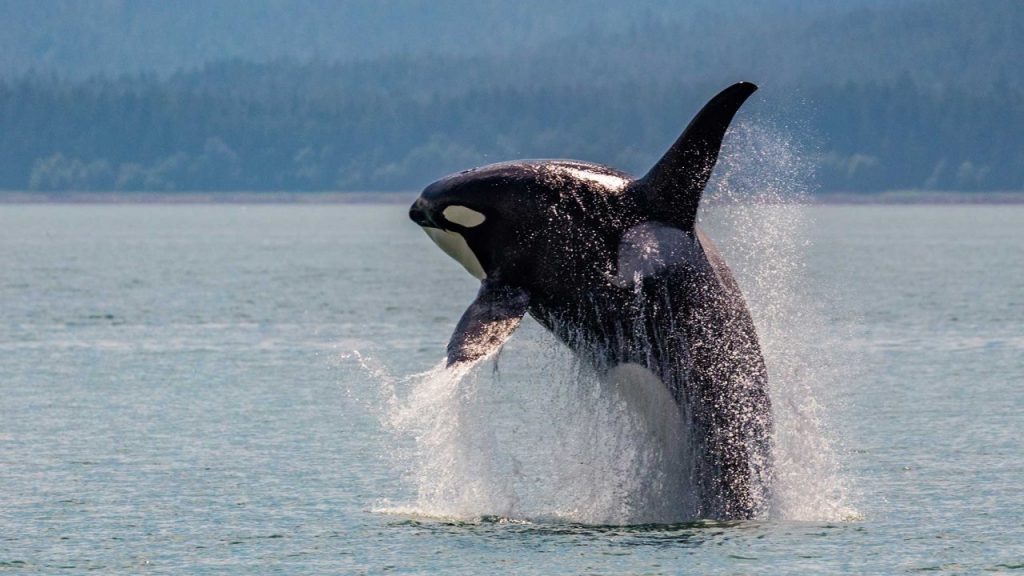
Best Time to Visit
The best time to visit Juneau depends on what you want to experience. While the city is a year-round destination, each season offers a distinct set of activities and a different atmosphere, from the bustling energy of summer to the quiet serenity of winter.
Summer Season Highlights
Summer, from June through August, is the peak tourist season in Juneau and for good reason. This is when the weather is at its mildest, and the days are at their longest, giving you ample time to explore.
- Mild Weather: Summer temperatures typically range from 55°F to 65°F (13°C to 18°C), with long periods of daylight—up to 18 hours around the summer solstice.
- Whale Watching: This is the best time for whale watching, as humpback whales are in the area to feed. Sightings are nearly guaranteed on most tours.
- Glacier and Outdoor Activities: All tours and activities are in full swing, from helicopter flights over the Juneau Icefield to kayaking on Mendenhall Lake. Hiking trails are clear of snow, and the wilderness is vibrant with life.
- Vibrant Atmosphere: The downtown area is bustling with activity, as cruise ships fill the port and local shops, restaurants, and tours are operating at full capacity.
Winter Travel
While many people think of Alaska as a summer destination, a winter trip to Juneau offers a unique and peaceful experience without the crowds.
- Snowy Landscapes: The city transforms into a winter wonderland, with snow blanketing the mountains and trees, creating stunning photo opportunities.
- Winter Sports: Juneau is home to Eaglecrest Ski Area, a community-owned ski hill with uncrowded slopes and beautiful ocean views. You can also enjoy cross-country skiing, snowshoeing, and ice skating on frozen lakes.
- Reduced Crowds: With no cruise ships in the winter, you can explore the Mendenhall Glacier and downtown area in a tranquil setting, often feeling like you have the place to yourself.
- Northern Lights: If you’re lucky, and the conditions are right, you may even get a chance to see the spectacular Aurora Borealis dancing in the night sky. The best time for viewing is typically from late August through April.
Festivals and Events
Juneau’s community spirit shines through its calendar of festivals and events, particularly during the summer.
- Juneau Maritime Festival: This event celebrates the city’s rich fishing and maritime heritage with music, food, and activities.
- Fourth of July Celebration: Juneau’s Independence Day celebration is a massive community event that includes a parade, a marathon, live music, and a fireworks display.
- Juneau Jazz & Classics Festival: Held in May, this festival brings world-class jazz and classical musicians to Juneau for a series of concerts and workshops.
- Gallery Walk: A popular December tradition, the Gallery Walk brings the downtown area to life as local artists and galleries open their doors for a community celebration of art and culture, offering a perfect opportunity for holiday shopping.
Food and Dining in Juneau
Juneau’s culinary scene is a delightful reflection of its unique location and heritage. With a bounty of fresh seafood right at its doorstep and a creative, tight-knit community, the city offers a diverse range of dining experiences, from casual dockside eateries to fine-dining restaurants.
Fresh Seafood in Juneau
As a coastal city, Juneau is synonymous with fresh, wild-caught Alaskan seafood. You can find some of the best fish and shellfish in the world here, often caught just a few hours before it lands on your plate.
- King Crab: A trip to Juneau is incomplete without indulging in Alaskan king crab. Known for its rich, sweet, and succulent meat, these massive crab legs are often served steamed with melted butter. Tracy’s King Crab Shack, a famous and bustling downtown spot, is a pilgrimage for anyone seeking a bucket of this delicacy.
- Wild Salmon: Alaska is famous for its five species of Pacific salmon. In Juneau, you can find it prepared in countless ways, from grilled and cedar-planked to smoked or in a creamy chowder. The Gold Creek Salmon Bake is a popular summer experience, offering an all-you-can-eat feast of wild salmon cooked over an alder wood fire.
- Halibut: A lean, flaky white fish, Alaskan halibut is a local favorite. You’ll find it in everything from gourmet preparations to the classic, hearty portion of fish and chips. A number of downtown restaurants and food trucks, like Deckhand Dave’s Fish Tacos, specialize in this fresh and flavorful catch.
Local Breweries and Cafes
Juneau’s beverage scene is as vibrant as its food scene, with a strong focus on local craft breweries and cozy cafes.
- Alaskan Brewing Company: A Juneau institution, the Alaskan Brewing Company is one of the most respected craft breweries in the country. Known for its award-winning Alaskan Amber and other popular brews, the brewery’s tasting room offers a chance to sample a wide variety of beers, including limited-edition and seasonal releases.
- Devil’s Club Brewing Company: Located in the heart of downtown, this microbrewery offers a rotating selection of innovative beers and a menu of delicious pub fare. It’s a favorite spot for locals and visitors alike.
- Heritage Coffee Roasting Co.: A local favorite for decades, Heritage Coffee is a staple of Juneau life. With multiple locations throughout the city, it’s the perfect place to grab a perfectly brewed coffee, a pastry, or a light meal while taking a break from sightseeing. Other notable spots include The Rookery Cafe, which transforms from a coffee shop in the morning to a bistro in the evening, and Coppa, known for its small-batch coffee and homemade ice cream.
Must-Try Alaskan Dishes
Beyond the fresh seafood, there are a few other Alaskan staples that you should seek out during your visit.
- Reindeer Sausage: A savory and unique alternative to traditional sausage, reindeer sausage is a classic Alaskan treat often served in sandwiches, on pizzas, or as a hot dog. It’s a must-try for a true taste of the Last Frontier.
- Seafood Chowder: On a cool, misty Juneau day, a bowl of rich and creamy seafood chowder is the perfect comfort food. Made with local crab, halibut, and clams, it’s a staple on many restaurant menus.
- Wild Berry Desserts: Alaska’s wild berries—including blueberries, salmonberries, and cranberries—are featured in many local desserts. Look for pies, cobblers, and jams that showcase these unique and delicious flavors.
- 2 successful queries
Try again without apps
Where to Stay in Juneau
Here is a guide to accommodations in Juneau, categorized by the type of lodging.
Hotels and Resorts
Juneau offers a variety of hotels and resorts that cater to a range of tastes, from luxurious stays to comfortable, mid-range options.
- Talkeetna Alaskan Lodge: This is a rustic-modern 4-star hotel located on a bluff, offering a high-end experience with fine dining options.
- Pearson’s Pond Suites: A luxury 4-star option, this lodging provides rooms with kitchenettes, in-house massage services, and amenities like a sauna and fitness center.
- Baranof Downtown, BW Signature Collection: A 3-star hotel located in the heart of Juneau, within walking distance of the waterfront, shops, and restaurants.
- Ramada by Wyndham Juneau: This 3-star hotel is situated across from the Alaska State Museum and offers an on-site restaurant with views of the Juneau waterfront.
Cozy Cabins and Lodges
For a more rustic and secluded experience, Juneau has many cabins and lodges. Many of these are located in natural settings, offering a retreat into the wilderness.
- Tongass National Forest Cabins: The U.S. Forest Service manages a number of public-use cabins in the Tongass National Forest. These are often rustic and off-grid, providing a true wilderness experience with opportunities for hiking and fishing.
- Douglas Island A-frame Cabin in the woods: A popular cabin rental that offers a private, serene setting.
- The Driftwood Lodge: While also a budget-friendly hotel, it has a classic, old-fashioned motel feel with a cinderblock design that can provide a cozy, unpretentious stay.
Budget-Friendly Accommodations
If you’re looking to save money, Juneau has several affordable options without sacrificing convenience.
- Juneau Hostel: A very affordable choice, this hostel offers dormitory and family rooms. It’s known for being a non-profit option with a cash-only fee and a chore requirement.
- Travelodge by Wyndham Juneau: A casual and affordable hotel that offers complimentary amenities like Wi-Fi and an area shuttle, along with an indoor pool. It is also known for being 24% less expensive than usual, according to recent searches.
- Super 8 by Wyndham Juneau: This budget hotel provides free breakfast, a free airport shuttle, and free Wi-Fi. It is also currently available for 24% less than usual.
- The Alaskan Hotel & Bar: This historic 1913 hotel is a budget-friendly option with a unique atmosphere. Some of its relaxed quarters have shared bathrooms, and there is a Victorian-style bar on-site.
Travel Tips
Juneau’s unique geography and variable climate require some specific considerations for travel. Here are some essential tips to help you plan your trip.
How to Get to Juneau
Juneau is a rare U.S. capital city that is not accessible by road, which means your travel options are limited to either air or sea.
- By Air: This is the most common way to get to Juneau. Juneau International Airport (JNU) is a major hub for Southeast Alaska. Alaska Airlines offers year-round daily flights from major cities like Seattle and Anchorage. During the summer, other airlines may also provide seasonal service. The flight from Seattle is typically a little over two hours.
- By Sea: The sea is a popular and scenic way to arrive, especially for those who want to bring their own vehicle.
- Cruise Ship: Most visitors arrive in Juneau as a port of call on an Alaska cruise through the Inside Passage.
- Alaska Marine Highway: This state-run ferry system provides year-round passenger and vehicle service to Juneau from various communities in Alaska, as well as from Bellingham, Washington, and Prince Rupert, British Columbia. It’s a true adventure that allows you to see the coastline up close.
Getting Around the City
Once you’re in Juneau, getting around is surprisingly manageable, especially in the downtown area.
- Walking: Downtown Juneau is very walkable. You can easily explore the historic streets, shops, and restaurants on foot, especially if you are arriving by cruise ship. The main cruise ship docks are located directly downtown.
- Shuttles and Taxis: For getting to attractions outside of downtown, such as the Mendenhall Glacier, various private companies offer “Glacier Shuttles” that run regularly from the cruise ship docks. Taxis and ride-sharing services like Uber are also available, though they may be more prevalent at the airport and in key tourist areas.
- Rental Cars: Rental cars are available, primarily at the airport. Renting a car gives you the most freedom to explore at your own pace, especially if you plan on visiting areas outside of the main tourist zones. However, note that rental rates can be high due to high demand in the summer.
- Public Transportation: Juneau has a public bus system called Capital Transit. While it serves everyday locations, visitors can use it to get to places like the Mendenhall Valley, though it may require a walk from the bus stop to the visitor center.
Essential Packing Guide
Juneau’s weather is notoriously unpredictable and can change quickly, so layering is key to a comfortable trip.
- Layered Clothing: This is the most important packing tip. Start with a moisture-wicking base layer (like merino wool), add an insulating mid-layer (a fleece or sweater), and top it with a waterproof and windproof outer shell. This system allows you to adapt to temperature changes throughout the day.
- Footwear: Bring a pair of comfortable, waterproof walking shoes or hiking boots. The trails can be wet and muddy, and a good pair of waterproof footwear is essential for staying dry.
- Rain Gear: Because Juneau is located in a temperate rainforest, rain is common. Pack a high-quality waterproof jacket and consider bringing waterproof pants for extended outdoor activities like hiking or kayaking.
- Miscellaneous Gear: Don’t forget a few key items to enhance your experience:
- Binoculars: Essential for spotting distant wildlife like whales, eagles, and mountain goats.
- Camera and Extra Batteries: The scenery is incredible, so you’ll want to capture it. Cold weather can drain batteries quickly, so pack a spare.
- Insect Repellent: Necessary, especially in June and July.
- Sunscreen and Sunglasses: Even on cloudy days, UV rays can be strong, especially on the water or near glaciers.
- Daypack: A small backpack is great for carrying extra layers, water, snacks, and gear during your daily adventures.
Conclusion
Juneau is a city that defies easy classification. It’s a state capital with no roads, a bustling cruise ship port with a quiet, small-town feel, and a hub of human activity set in the middle of a vast, untamed wilderness. This unique combination of features makes Juneau a truly special place and a destination unlike any other.
Why Juneau Should Be on Your Travel Bucket List
Juneau should be on every traveler’s bucket list for its powerful blend of natural beauty, cultural heritage, and thrilling adventure.
- Access to Incredible Glaciers: The city serves as a gateway to the Juneau Icefield, allowing for a remarkable variety of glacier experiences, from accessible hikes to helicopter tours and dog sledding. The chance to get up close to a living glacier like the Mendenhall is a rare opportunity.
- World-Class Wildlife Viewing: From the guaranteed thrill of watching humpback whales feed in the Inside Passage to spotting brown bears fishing for salmon, Juneau is a top destination for wildlife enthusiasts. The abundance of bald eagles and other species makes it a nature lover’s paradise.
- Adventures for Everyone: Whether you’re a seasoned hiker looking to conquer a challenging mountain trail, a first-timer who wants to go kayaking on a peaceful lake, or a family seeking an educational and fun experience at the Mount Roberts Tramway, Juneau has an activity that will captivate you.
- A Unique and Isolated Capital: Visiting a state capital that can only be reached by air or sea is an adventure in itself. This isolation has preserved a unique character and a strong sense of community, allowing you to experience a more authentic side of Alaska.
In short, Juneau offers an unforgettable journey into the heart of Alaska’s wild, majestic, and beautiful landscape. Your visit not only creates lasting memories but also supports the local community and the ongoing efforts to protect the incredible environment that makes this city so special.

